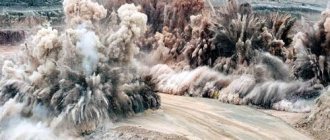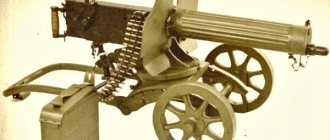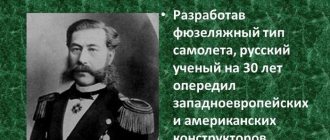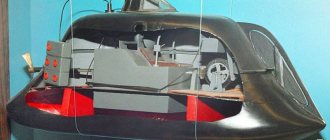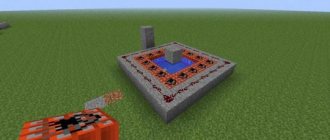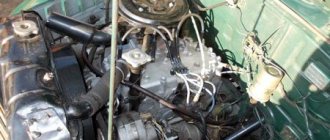Dynamite is a special explosive mixture based on nitroglycerin. It is worth noting that in its pure form this substance is extremely dangerous. While the impregnation of solid absorbents with nitroglycerin makes it safe for storage and use, convenient to use. Dynamite may also contain other substances. As a rule, the resulting mass has the shape of a cylinder and is packaged in paper or plastic.
Invention of dynamite
An important event for the invention of dynamite was the discovery of nitroglycerin. This happened in 1846. The discoverer was a chemist from Italy, Ascaño Sobrero. Factories around the world immediately began to be built for powerful explosives. One of them opened in Russia. Domestic chemists Zinin and Petrushevsky were looking for a way to use it safely. One of their students was Alfred Nobel.
In 1863, Nobel discovered the detonator cap, which greatly simplified the practical use of nitroglycerin. This was achieved by activating the explosive with mercury fulminate. Many people today consider this discovery of Nobel to be more important than the discovery of dynamite.
The Swedish chemist patented dynamite in 1867. Until the middle of the last century, it was used as the main explosive when working in the mountains and, of course, in military affairs.
Biography
The future inventor of dynamite, Alfred Nobel, was born in Stockholm (Sweden) on October 21, 1833. He was the fourth son of Emmanuel and Caroline Nobel. Emmanuel was an engineer who married Caroline Andriette Alsel in 1827. The couple had eight children, of whom only Alfred and three brothers reached adulthood. As a child, Nobel was often ill, but from an early age he showed a keen curiosity. He was interested in explosives and learned basic engineering from his father. The father, meanwhile, suffered failures in various business ventures until he moved to St. Petersburg in 1837, where he became a successful manufacturer of mines and tools.
Dynamite walks across the planet
Nobel himself first proposed the use of dynamite for military purposes in the year he patented it. However, then the idea was considered unsuccessful, since it was too unsafe.
Dynamite began to be produced on an industrial scale in 1869. Russian industrialists were among the first to use it. Already in 1871 it was used in the mining of coal and zinc ore.
Dynamite production volumes grew exponentially. If in 1867 11 tons were produced, then after 5 years - 1570 tons, and by 1875 up to 8 thousand tons were produced.
The Germans were the first to realize that dynamite is an excellent weapon. They began blowing up fortresses and bridges, prompting the French to use it as well. In 1871, this explosive appeared in the engineering forces of Austria-Hungary.
Life abroad
In 1842, Nobel's family left Stockholm to join their father in St. Petersburg. Alfred's now wealthy parents could now hire him private teachers, and he proved to be an eager student. By the age of 16, Nobel had become a competent chemist, fluent in English, German, French and Russian.
In 1850, Alfred left Russia to spend a year in Paris studying chemistry and then four years in the United States working under John Erickson, who was building the battleship Monitor. Upon returning to St. Petersburg, he worked in his father's factory, which produced military equipment during the Crimean War. After the end of hostilities in 1856, the company had difficulty transitioning to manufacturing equipment for steamships and went bankrupt in 1859.
What is dynamite made of?
As soon as the industrialists and military of the world found out what was included in dynamite, they immediately began producing it. They continue to produce it today. Nowadays, it consists of cartridges weighing up to 200 grams, which can be used for six months. There are high-percentage and low-percentage substances.
Despite the fact that the composition of dynamite differed somewhat among different manufacturers, its main components naturally remained unchanged.
The main one is nitro mixture. It began to be used to increase frost resistance. It consisted of nitroglycerin and dinitrogycol. This is the main component that occupied up to 40% of the weight. The next largest component is ammonium nitrate (up to 30%), almost 20% went to sodium nitrate. The remaining components were used to a much lesser extent - these are nitro fiber, wood flour, balsa and talc.
Recommendations
- ^ a b c
"Alfred Nobel - Dynamite" (in Swedish). Swedish National Museum of Science and Technology. Retrieved October 1, 2022. - Schück & Sohlman (1929), p. 101.
- US Patent 234489, issued to Morse on November 16, 1880.
- "dynamite." American Heritage® Dictionary of the English Language, Fourth Edition. 2003. Houghton Mifflin Company, March 19, 2013. https://www.thefreedictionary.com/dynamite
- "dynamite." Collins English Dictionary - Complete and Unabridged. 1991, 1994, 1998, 2000, 2003. HarperCollins Publishers, March 19, 2013. https://www.thefreedictionary.com/dynamite
- ^ a b
"Austin Powder Guide, Dynamite Series, page 2" (PDF). Archived from the original (PDF) on March 21, 2012. Retrieved June 9, 2012. - ChemViews. "145 years of dynamite." Chemistry views
. ChemViews Magazine. Retrieved May 6, 2022. - Carlos López Gimeno, Emilio López Gimeno, Francisco Javier Ayala-Carcedo, Drilling and Blasting of Rocks
, translated by Yvonne Visser de Ramiro from
Manual de perforación y voladura de rocas
(1987), Geological and Technological Institute of Spain (Instituto Tecnológico Geominero de Espan ~ a), Taylor & Francis, London and New York, 1995, ISBN 90-5410-199-7 - "At home". Chemical and Allied Industries Association
. - "Historical moments of the 1980s." June 30, 2006. Archived from the original on June 30, 2006. Retrieved June 9, 2012.
- "Federal Reporter Annotated Key Numbers, Volume 188: Cases Tried and Decided in the Circuit Courts of Appeal and the District and Circuit Courts of the United States, August-October 1911." UNT Electronic Library
. May 8, 1911 - J. Köhler, R. Meyer, A. Homburg: Explosivstoffe
. Zehnte, vollständig überarbeitete Auflage. Wiley-VCH Verlag GmbH & Co. KGaA, Weinheim 2008, ISBN 978-3-527-32009-7. - Gibbs, T. R., Popolato, A. LASL data on explosive properties
. Los Alamos National Laboratory, New Mexico. USDOE, 1980. - "Unexploded Ordnance Information: Ammunition Fillers." Uxoinfo.com. Retrieved June 9, 2012.
- Ledgard, Jared (2007). The Soldier's Handbook, Volume 1: Explosives Operations
. ISBN 978-0-615-14794-9.
Dynamite in the service of criminals
Criminal organizations of all stripes and terrorist organizations were among the first to understand what dynamite was. One of the first crimes using this explosive occurred in the United States in 1875. American sailor William Kong-Thomassen tried to blow up the Moselle ship at sea in order to obtain insurance. However, a barrel of homemade dynamite exploded while still in the port during loading. The tragedy claimed the lives of 80 people.
However, the first failure did not stop the leaders of the underworld and terrorists. From 1883 to 1885, members of an extremist organization that advocated the separation of Ireland from Great Britain carried out a series of explosions using dynamite. Including an explosion at the headquarters of the British police Scotland Yard and an attempt to blow up London Bridge.
This substance was also used by fighters against autocracy in Russia. In particular, the People's Will party. In Europe, dynamite was widely used by anarchists.
Death of a Death Dealer
One can only guess about the reasons for this decision. He was secretive and did not tell anyone about any of his decisions in the months leading up to his death. The most plausible possibility is that a strange incident in 1888 may have set off a chain of thought that led to his will. That same year, Alfred's brother Ludwig died while in Cannes, France. The French press reported his brother's death, but confused him with Alfred, and one of the newspapers published the headline "The Merchant of Death Died." Perhaps the inventor of dynamite instituted the prizes to avoid precisely the kind of posthumous reputation expressed by this premature obituary. It is obvious that the awards established reflect his interest in the fields of chemistry, physics, physiology and literature. There is also ample evidence that his friendship with the prominent Austrian pacifist Bertha von Suttner inspired him to create the Peace Prize.
Nobel himself, however, remains a figure of paradox and contradiction: a brilliant solitary man, part pessimist and part idealist, who invented the powerful explosives used in modern warfare and established the world's most prestigious prizes for intellectual services rendered to humanity.
Dynamite's popularity is declining
For many years, most industrialists believed that dynamite was the main explosive in mining and the discovery of new minerals. It withstood the competition of saltpeter until the middle of the 20th century. In some countries - until the mid-80s. For example, dynamite was very popular in South Africa. It was used here in gold mines. Already closer to the 90s, under pressure from trade union organizations, most factories were converted to safer explosives based on nitrate.
In Russia, dynamite was mass-produced after the Great Patriotic War. The hard-to-freeze composition was especially popular. The explosives left the domestic industry only in the 60s.
For many countries, dynamite is an affordable and easily produced explosive. This state of affairs continued for almost 100 years. Today, dynamite accounts for no more than 2% of the total turnover of all explosives in the world.
Ascetic, writer, pacifist
The inventor of dynamite, Nobel, was a complex personality, which puzzled his contemporaries. Although his business interests required him to travel almost constantly, he remained a solitary recluse who was prone to bouts of depression. Alfred led a solitary and simple life, he was a man of ascetic habits, but he could also be a polite host, a good listener, and a man of insightful mind.
The inventor of dynamite never married, and apparently preferred the joy of creativity to romantic attachments. He had an abiding interest in literature, writing plays, novels and poetry that remained almost entirely unpublished. He had amazing energy and found it difficult to relax after intense work. Among his contemporaries he enjoyed a reputation as a liberal or even a socialist, but in fact he distrusted democracy, was against women's suffrage and supported a soft paternalism towards his many employees. Although the Swedish inventor of dynamite was essentially a pacifist and hoped that the destructive power of his creations would help end war, his view of humanity and nations was pessimistic.
Physical and chemical qualities
Explosion of a stick of dynamite
Dynamite is a solid mass based on two main ingredients, nitroglycerin and an absorbent absorbent. The chemical and physical composition of the material differs depending on the classification and application. Therefore, knowing what dynamite is made of is key to its characteristics.
Soviet dynamite consists of the following components:
- nitro mixture based on nitroglycerin - 62%;
- sodium nitrate - 32%;
- colloxylin - 3.5%;
- wood flour - 2.5%.
The physical properties of such a material have the following indicators:
- sensitivity to impact with a load of 2 kg - 25 cm;
- flash point - 205 °C;
- detonation speed - 6000 m/s;
- heat of explosion - 1210 kcal/kg;
- temperature of explosion products - 4040 °C;
- volume of explosion products - 630 l/kg;
- Brisance according to Hess - 16 mm;
- performance according to Trauzl - 350 cubic meters. cm;
- Explosion efficiency - 76%;
- TNT equivalent - 1.2.
The use of nitro mixtures instead of pure nitroglycerin is due to a decrease in the solidification temperature. To do this, nitroglycol or diethylene glycol dinitrate is added. The latter is used for nitro mixtures in Soviet dynamite.
Taking into account the chemical and physical properties, storing the resulting briquettes requires compliance with a number of conditions. The shelf life of the material is one year. Dynamite is slightly soluble in water, does not interact with metal, but burns well, which leads to an explosion.
Ordinary dynamite is stored in a well-ventilated area in a temperature range of 10 to 22 degrees. It is important to protect it from exposure to sunlight. These values refer to standard indicators; there are mixtures with other storage temperatures used in Arctic expeditions and southern latitudes.
Reducing the temperature beyond the permissible limit leads to an increase in sensitivity. Such material can detonate with minimal physical impact. Exceeding the temperature leads to the release of nitroglycerin, which can also lead to an explosion due to its instability.
How to make at home
Dynamite materials were stored in such bunkers
Making dynamite at home with the right approach is not difficult, and in some cases safer than making gunpowder. Despite this, such production is not recommended.
First, to make dynamite, you need nitroglycerin
You can get it yourself, however, careless storage and use is fraught with the most tragic consequences. This substance in its pure form is extremely unstable and temperature sensitive.
Secondly, safety precautions do not allow the production of nitroglycerin and dynamite in a residential area. This also applies to experiments with them.
The presence of strangers, as well as other factors that can distract attention, is not allowed
Intentional distortions of recipes should also be taken into account. Many sources on the Internet, including Wikipedia, do not always correctly describe the procedure, ratio, and safety precautions. All this leads to unsuccessful experiments at best, and disruption at worst.
Author of the article:
Parpurin Vadim
History[edit | edit code]
| Classic version Java Edition | ||
| 0.26 SURVIVAL TEST 9 (October 24, 2009) | TNT added. | |
| The player is given 10 TNT blocks when starting in Survival mode. | ||
| 0.29 (October 29, 2009) | TNT cannot be activated in Creative mode. | |
| If you activate a TNT block and then hit it, it will deactivate and fall out. | ||
| Indev version of Java Edition | ||
| January 29 | TNT is no longer issued at startup. | |
| TNT can no longer be neutralized. | ||
| January 30, 2010 | TNT can now be crafted. | |
| Alpha Java Edition | ||
| 1.0.1 | TNT can now be activated with red stone. | |
| Java Edition Beta | ||
| 1.7 | TNT can no longer be activated by hand, but can be activated by flint, fire or red stone. | |
| 1.8 | TNT can now be activated again in Creative mode. | |
| Official release of Java Edition | ||
| 1.3 | 12w26a | TNT does not drop when destroyed in Creative mode. |
| 1.7 | 13w36a | TNT can now be crafted from red sand. |
| 1.14 | 19w11a | Explosions from TNT now have a 100% drop rate for exploded blocks. |
| 1.16 | 20w11a | TNT is activated when it is hit by a burning projectile. |
| 0.4.0 | Added TNT. | |
| 0.8.0 | build 2 | Now you can activate TNT with flint. |
| 0.12.1 | build 10 | The sound of TNT is now like on the Java Edition. |
| 0.13.0 | build 1 | TNT can now be activated by any redstone mechanism (torch/lever/button/stone, etc.). |
further reading
- Cartwright, A. P. (1964). Dynamite: The Story of African Explosives and Chemical Industries Limited
. Cape Town: Purnell & Sons (SA) (Pty) Ltd. - Larabee, Anne (2015). In the Wrong Hands: Popular Weapons Manuals and Their Historical Challenges to Democratic Society
. New York: Oxford University Press. pp. 38–39. ISBN 978-0-19-020117-3. OCLC 927145132. - Schück, H. and Sohlman, R. (1929). Life of Alfred Nobel
. London: William Heinemann Ltd.
Interesting facts[edit | edit code]
- Once activated, TNT explodes after 4 seconds/80 game ticks or 40 .
- If you simultaneously throw out TNT and a block of red stone from two dispensers located nearby, activated TNT may fall down.
- The TNT block has many inconsistencies with the real world. It is called "TNT" (that is, TNT), but it consists of 16 sticks of dynamite, which are actually filled not with trinitrotoluene (as many mistakenly believe), but with an adsorbent (such as sawdust, sand or earth) impregnated with nitroglycerin. This block is crafted from a mixture of sand and gunpowder, although gunpowder has nothing to do with TNT or dynamite.
- On many servers, the crafting, installation and activation (or, more often, one of the three) of dynamite is prohibited by ordinary players. This is due to the fact that dynamite is a favorite toy of griefers.
- If you detonate TNT in the thickness of the stone, it will destroy the 3x3x3 cube around it. This can be used to quickly create underground rooms in Creative mode, but be careful: if there is dirt or air near it, the explosion crater will be uneven.
- In Classic, the TNT block serves a decorative function and cannot be exploded.
- Once activated, the dynamite not only falls, but also becomes unstable, making it possible to walk through it or fall into the hole in which it was placed. This is because once activated, dynamite ceases to be a block and becomes an entity (like falling sand or gravel).
- In version 1.7.2, in third-person view, the block in the hand, as well as when installed in the world, has “TIT” instead of “TNT” on the north and east sides.
- If, when flying out of a cannon at high speed, a TNT block crashes into a wall, then it slides up it to a height of 2-3 blocks, and then begins to fall. This happens when the block takes off, and vice versa when it falls (the direction depends on the vertical direction of the velocity vector).
- 9 blocks of TNT can be obtained from the desert temple. You need to clear the pressure plate by digging out the blocks underneath it. In order not to fall into a trap and not to lose jewelry in the chests, you need to dig up not blue, but orange terracotta in the center of the hall.
- In Survival Test, TNT could not be obtained legally. When the game starts, the player is given 10 TNT. Activated TNT can be neutralized by pressing LMB.
- If THT is activated, then it can no longer be deactivated (only killed as an entity, with the command ).
- In the Pocket Edition version Alpha 0.8.1 there is a bug where TNT destroys blocks, but does not activate other TNTs standing nearby.
- If you hold ⇧ Shift and try to light TNT with a flint, the block will light up instead of activating.
- On February 4, 2022, the Russian District Court of the Tyumen Region decided that an article about dynamite crafting on one of the Russian sites was extremist, and sent an appeal to Roskomnadzor with a request to block it, but Roskomnadzor refused
to do this, and sent a letter to the court asking to reconsider its solution. The recipe is currently fully available on the website. - In version Alpha 0.16.0 of the pocket edition, the wither shoots at the ignited dynamite, despite the fact that TNT is not a mob.
ApplicationEdit
Traditionally, dynamite was used to clear territory for one’s own needs, or, on the contrary, to block it, but it was also widely used for more radical purposes: terrorist attacks, assassinations and sabotage, when destroying a certain object, or as a kind of analogue of hand grenades. This may be relevant even after the apocalypse, if, of course, there is still usable dynamite left. But you should take into account its unstable properties and be extremely careful when handling it, because strong heat or impact can easily activate it, not to mention a bullet or fire hitting it. Nevertheless, these explosives can be very useful: they can be used to clear an area of rubble, destroy the desired target, or as an analogue of fragmentation grenades. In the latter case, a separate stick of dynamite is used with a cord threaded into it - the longer the cord, the longer the time will be before the charge explodes. The cord is set on fire and the saber is thrown as far as possible in the desired direction, after which an explosion occurs that can easily kill most mutants, robots or anyone else, or at least cause serious damage. Sometimes, to increase power, two or more sticks are used at a time, fastened to each other, but this significantly increases the weight of the dynamite. Also, original bombs are made from dynamite using all sorts of clock mechanisms. In general, this explosive can be very useful if you use it wisely and do not forget about safety precautions, in particular during storage.
Usage[edit | edit code]
TNT is activated by fire (including from lava), any redstone device, the use of flint, being hit by a flaming arrow, or any other nearby explosion. Before version Beta 1.7, TNT could also be activated with a blow of the hand and a pressure plate could be installed on it. The damage that a TNT explosion creates is greatest at the center of the explosion and decreases toward the edges. TNT can destroy any block in the game except obsidian, bedrock, fluid sources, End chests, End portal frames, command blocks, anvils and ancient debris. TNT will detonate if there is an explosion nearby, so placing several TNT blocks nearby and activating them will create a chain reaction, and therefore the explosion will be more powerful than the explosion of one block. In addition, the explosion can throw away loose blocks, so the activated dynamite from the explosions scatters in different directions, which also makes it possible to create cannons that shoot dynamite over long distances. If an explosion (this applies not only to TNT, but also to creepers) occurs in water, then it does not damage the blocks, although players and mobs still take damage from the explosion.
Resource extraction by TNT explosions is faster, but very costly - 3⁄4 blocks that are within the blast radius are destroyed along with the drop. (Since version 1.14, all blocks drop out). The remaining quarter can be picked up as a drop. In addition, crafting TNT is quite expensive, so using it for resource extraction is ineffective. Its only use in resource extraction is the creation of man-made caves, on the walls of which you can find ores and mine them in the classical way. Since version 19w11a, explosions from TNT have a 100% chance of dropping destroyed blocks.
Since 1.3, TNT damage depends on difficulty, while on Peaceful difficulty there is no damage at all. A healthy player without armor on Normal difficulty will die at a distance of 4 blocks from TNT, at a distance of 6 blocks the player will have 5 () health. If there is a wall of any material between the player and the explosion, the damage will be reduced to .
As an ingredient for crafting edit | edit code
| Ingredients | Crafting recipes | Result | Description |
| TNT + Trolley | Trolley with TNT | ||
| Sodium +TNT | Underwater TNT | [Only for Bedrock and Education editions ] |
Who was the first?
One of the first to join the team was a wealthy young man from a family of diplomats. He was also a model and was fond of translating from foreign languages. And since he lived in Europe for more than five years, his sense of fashion trends was honed. His name was Leonid Nerushenko. The third participant was able to join only a few months later. The search took place under extremely harsh conditions. But they soon found the right person. Ilya Durov was from the city of Ivanovo. Having vast musical experience behind him, Durov was really able to fit perfectly into the team and complement the others with his qualities. The children's ensemble "A+B" gave him the necessary practice and allowed him to hone his natural talent. He also played the saxophone and graduated from music school in this direction. But most of all, Ilya Durov’s creative success was influenced by the experience of his own group “Word of Mouth”. At that time, he listened to foreign musical groups, became acquainted with new styles, this influenced Ilya’s musical tastes.
When Yuri placed an ad on the Muz TV channel, Ilya decided to take a risk. And, as it turned out later, I was right!
